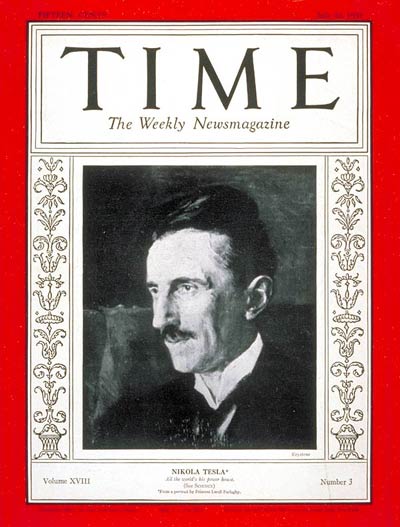Exploring the Life and Legacy of Nikola Tesla

Early Life and Education of Nikola Tesla
Nikola Tesla was born on July 10, 1856, in the village of Smiljan, which was then part of the Austrian Empire (now Croatia). He was the fourth of five children born to Milutin Tesla, a Serbian Orthodox priest, and Đuka Mandić, a skilled inventor in her own right. From a young age, Tesla exhibited a remarkable aptitude for mathematics and science, often spending hours pondering the mysteries of the natural world and dreaming of ways to harness its power.
After completing his primary education, Tesla enrolled at the Austrian Polytechnic School in Graz, where he studied electrical engineering. During his time at the university, Tesla developed a deep fascination with the potential of alternating current (AC) electricity, which would later become the foundation of many of his most groundbreaking inventions.
The Inventions and Discoveries of Nikola Tesla

Source: Wikipedia
Throughout his remarkable career, Nikola Tesla made numerous groundbreaking contributions to the field of electrical engineering and technology. Some of his most notable inventions and discoveries include:
- The Induction Motor: One of Tesla’s earliest and most significant inventions was the induction motor, which used alternating current (AC) to power a rotating magnetic field. This revolutionary design paved the way for the widespread adoption of AC power, eventually replacing the less efficient direct current (DC) systems championed by his rival, Thomas Edison.
- The Tesla Coil: Tesla’s invention of the Tesla coil, a high-voltage, high-frequency transformer circuit, laid the groundwork for many of the wireless technologies we use today, including radio, television, and even modern Wi-Fi.
- The Wireless Transmission of Electricity: Perhaps one of Tesla’s most ambitious and visionary projects was his work on the wireless transmission of electricity. He envisioned a global network of “wireless power” that could transmit electricity without the need for physical wires or cables, a concept that remains a subject of ongoing research and development.
- The Wardenclyffe Tower: As part of his efforts to realize his dream of wireless power transmission, Tesla designed and built the Wardenclyffe Tower, a massive, 187-foot-tall structure that was intended to serve as a prototype for a global wireless power network. Although the project ultimately failed due to lack of funding, it remains a testament to Tesla’s boundless imagination and technological foresight.
Also read: How Electric Cars are Shocking the Environment (in a Good Way)
Tesla vs. Edison: The Battle of the Electric Giants
One of the most famous rivalries in the history of science was the ongoing battle between Nikola Tesla and Thomas Edison, two of the most influential figures in the development of modern electricity. While Edison championed the use of direct current (DC) power, Tesla’s pioneering work on alternating current (AC) power systems eventually won out, leading to the widespread adoption of AC as the standard for power distribution.
The rivalry between Tesla and Edison was not just a clash of technological visions but also a battle of egos and business interests. The so-called “War of Currents” between the two men was a fierce and often personal struggle, with each side employing a range of tactics, from public demonstrations to political lobbying, to try to gain the upper hand.
The Wireless Transmission of Electricity
One of Nikola Tesla’s most ambitious and visionary projects was his work on the wireless transmission of electricity. Inspired by his belief that electricity could be transmitted through the air without the need for physical wires or cables, Tesla dedicated much of his later career to developing this technology.
In the early 1900s, Tesla began work on the Wardenclyffe Tower, a massive, 187-foot-tall structure that was intended to serve as a prototype for a global wireless power network. The tower was designed to transmit electricity wirelessly, using the Earth’s natural electrical charge and the ionosphere as a conduit.
Despite the technical challenges and the lack of funding that ultimately doomed the Wardenclyffe project, Tesla’s vision of wireless power transmission remains a subject of ongoing research and development. Today, scientists and engineers are exploring a range of wireless power technologies, from inductive charging to microwave and laser-based systems, that could one day realize Tesla’s dream of a world powered by wireless electricity.
Also read: Top Electric Bikes in the Market
The Wardenclyffe Tower and the Dream of Wireless Power
The Wardenclyffe Tower, one of Nikola Tesla’s most ambitious and visionary projects, was a bold attempt to realize his dream of wireless power transmission. Designed and built in the early 1900s, the tower was a massive, 187-foot-tall structure that was intended to serve as a prototype for a global wireless power network.
Tesla’s vision for the Wardenclyffe Tower was to use the Earth’s natural electrical charge and the ionosphere as a conduit for transmitting electricity wirelessly, without the need for physical wires or cables. The tower was equipped with a massive, spherical terminal at the top, which was designed to generate and transmit electrical energy through the air.
Despite the technical challenges and the lack of funding that ultimately doomed the Wardenclyffe project, Tesla’s dream of wireless power transmission remains a subject of ongoing research and development. Today, scientists and engineers are exploring a range of wireless power technologies, from inductive charging to microwave and laser-based systems, that could one day realize Tesla’s vision of a world powered by wireless electricity.
The Forgotten Genius: Nikola Tesla’s Contributions to Science
Despite his immense contributions to the field of science and technology, Nikola Tesla’s legacy has often been overshadowed by the more well-known achievements of his contemporaries, such as Thomas Edison and Guglielmo Marconi. Throughout his life, Tesla faced numerous challenges and setbacks, including a lack of financial support, the theft of his ideas, and the marginalization of his work by the scientific establishment.
Yet, Tesla’s impact on the modern world cannot be overstated. His pioneering work on alternating current (AC) power systems, the induction motor, and the wireless transmission of electricity laid the foundation for many of the technologies we rely on today. From the electrical grid that powers our homes to the wireless communication systems that connect us globally, Tesla’s innovations have had a profound and lasting impact on our lives.
The Legacy of Nikola Tesla: Impact on Technology and Society

Source: Wikipedia
Nikola Tesla’s legacy extends far beyond the specific inventions and discoveries that bear his name. His relentless pursuit of scientific knowledge and his unwavering commitment to pushing the boundaries of what was possible have had a profound and lasting impact on the world we live in today.
Tesla’s work has influenced the development of a wide range of technologies, from the electric motor and the power grid to modern wireless communication systems and renewable energy technologies. His visionary ideas and groundbreaking innovations have shaped the course of scientific progress, inspiring generations of scientists, engineers, and inventors to continue exploring the mysteries of the natural world.
Beyond the realm of technology, Tesla’s life and work have also had a significant impact on our understanding of the human mind and the nature of creativity. His ability to visualize complex scientific concepts and to think in terms of systems and interconnections has been the subject of much study and admiration, offering insights into the nature of human intelligence and the creative process.
Honoring Nikola Tesla: Museums and Memorials Around the World
Despite the relative obscurity of his name in popular culture, Nikola Tesla’s legacy has been honored and celebrated through a variety of museums, memorials, and other tributes around the world. These institutions serve as important reminders of Tesla’s extraordinary contributions to science and technology, and they continue to inspire and educate people about the life and work of this remarkable individual.
One of the most prominent Tesla-related institutions is the Nikola Tesla Museum in Belgrade, Serbia, which houses a vast collection of Tesla’s personal belongings, documents, and scientific equipment. The museum offers visitors a unique opportunity to learn about Tesla’s life and work, and to gain a deeper appreciation for his enduring impact on the world.
In addition to the museum in Belgrade, there are numerous other memorials and tributes to Nikola Tesla around the world, including statues, plaques, and even Tesla-themed parks and events. These efforts to honor Tesla’s legacy reflect the enduring fascination and respect that people have for this pioneering scientist and inventor, whose ideas and innovations continue to shape the world we live in today.
To learn more about the life and legacy of Nikola Tesla, explore the resources and exhibits available at the Nikola Tesla Museum in Belgrade, Serbia, or visit one of the many other Tesla-related memorials and tributes around the world. By delving deeper into Tesla’s extraordinary contributions to science and technology, you can gain a greater appreciation for the visionary thinkers and innovators who have shaped the course of human history.
Conclusion: Remembering the Extraordinary Life of Nikola Tesla
Nikola Tesla was a true visionary, a pioneer whose boundless imagination and relentless pursuit of scientific knowledge have left an indelible mark on the world we live in today. From the alternating current power systems that power our homes and businesses to the wireless communication technologies that connect us globally, Tesla’s innovations have transformed the way we live, work, and interact with the world around us.
Yet, despite the immense impact of his work, Tesla’s legacy has often been overshadowed by the more well-known achievements of his contemporaries. It is only in recent years that his true genius and the full extent of his contributions to science and technology have begun to be more widely recognized and celebrated.
As we continue to grapple with the complex challenges of the modern world, the life and work of Nikola Tesla serve as a powerful reminder of the transformative potential of human ingenuity and creativity. By honoring his legacy and drawing inspiration from his visionary thinking, we can continue to push the boundaries of what is possible, and work towards a future where the boundless potential of the natural world is harnessed for the benefit of all.




